|
Distance: Maintains a variable or measured distance between two elements. The front edges of the cubes have been defined in a distance relation:
|
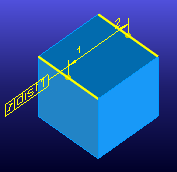 |
|
Coincident: Aligns two reference elements, such as the axes of two cylinders. The relation is illustrated by the line that passes through the axes of both cylinders:
|
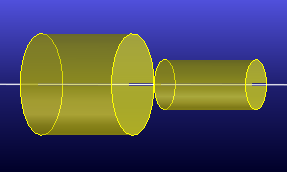 |
|
Parallel: Makes two elements parallel, such as two edges. The front edge of each cube has been defined as parallel:
|
 |
|
Angle: Maintains a variable or measured angle between two elements:
|
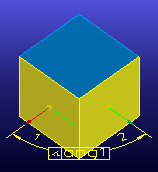 |
|
Tangent: Makes one element tangent to another. This illustration shows how the cylinder would move to become tangent to the cube:
|
 |
|
Perpend: Makes one element perpendicular to another. You can see how the cylindrical face in this illustration must move to become perpendicular to the face on the cube:
|
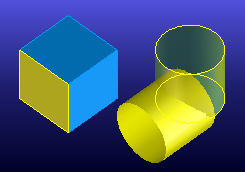 |
|
Radius: Constrains the radius of one element. You must select an edge or face that has a radius for Elem 1, such as the cylinder shown here, to define this type of relation.
|
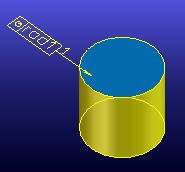 |
|
Diameter: Constrains the diameter of one element. Like a radius relation, you must select an edge or face that has a diameter to define this type of relation.
|
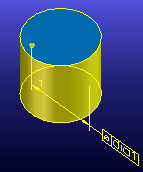 |
|
Cone Angle: Constrains the angle of a cone. You can choose half or full cone angle.
|
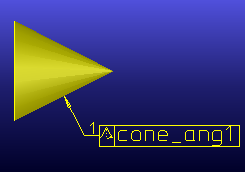 |
|
Chamfer: Constrains the value of a distance chamfer.
|
 |